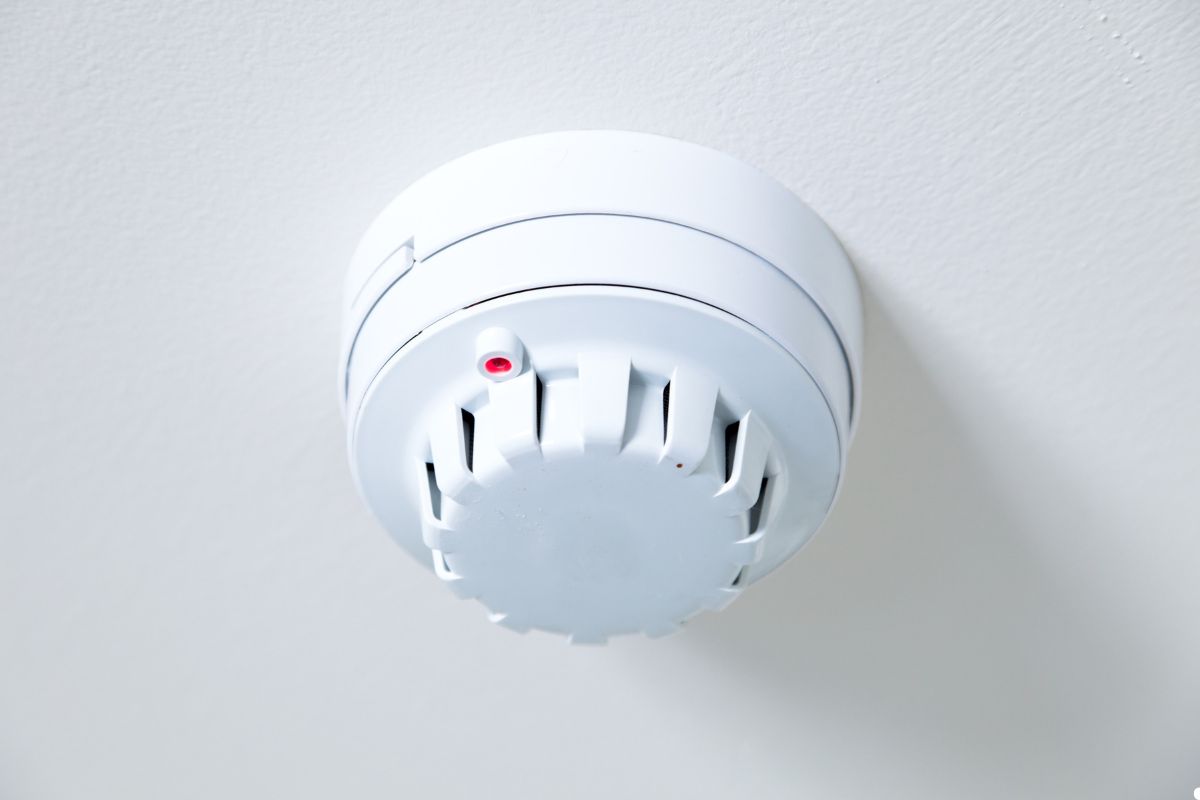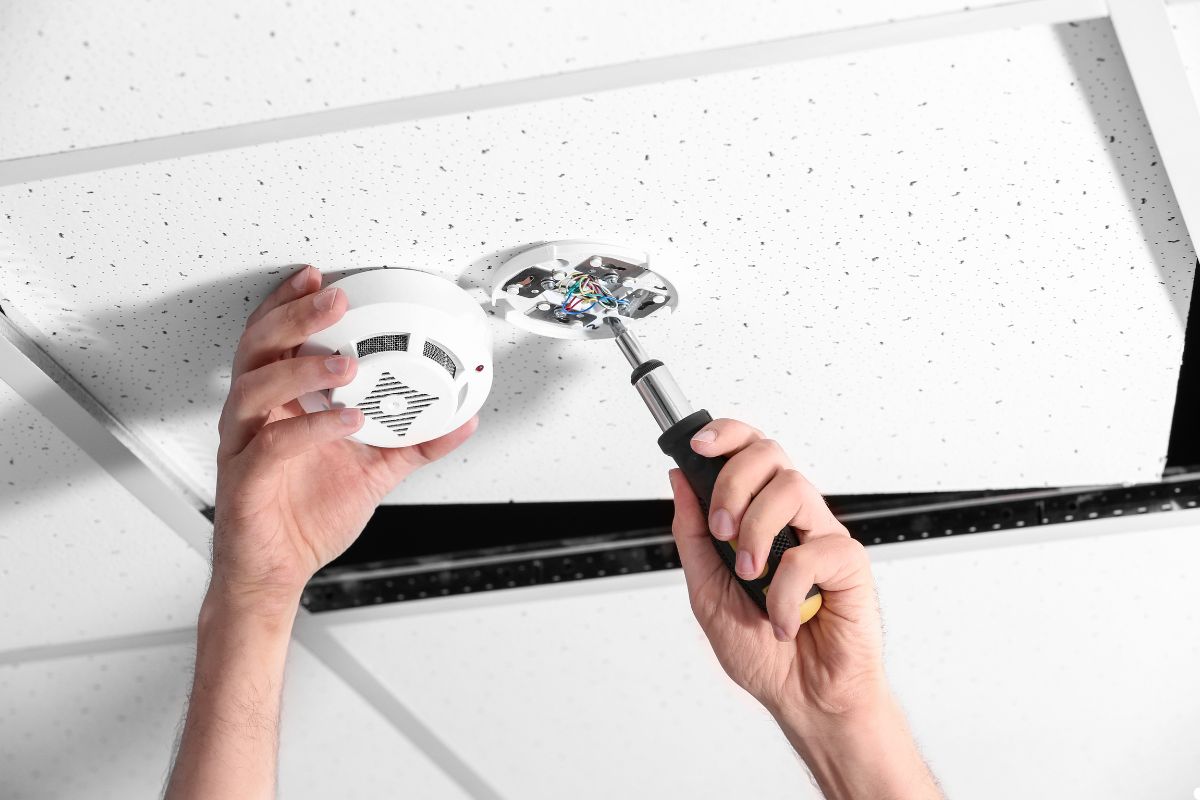
In short, you need to pair your fire protection system with a home security device because it offers a significantly higher level of comprehensive protection, faster emergency response, and greater peace of mind than either system can provide alone. Integrating these systems creates a synergistic effect, ensuring your home and family are better defended against a range of threats. Keep reading to understand why this integration is so important for every homeowner. Call us today to learn more and enhance your home’s security!
The Importance of Comprehensive Home Protection
In today’s world, the need for robust home safety measures goes far beyond basic fire or security systems. Relying on a single, isolated system leaves your home vulnerable to a variety of threats. A comprehensive approach to home protection means considering all potential risks – from fires and burglaries to carbon monoxide leaks and other emergencies. Integrating your fire protection and security systems is a crucial step in building this comprehensive defense. Think of it as fortifying your home with multiple layers of protection, ensuring that no single point of failure can compromise your safety. This proactive approach provides a more secure and resilient environment for you and your loved ones.
The Limitations of Standalone Systems
Consider the limitations of having separate systems.
- Fire Protection Alone: A standalone fire alarm system is excellent at detecting smoke and alerting you to a fire. However, it doesn’t protect against burglaries or alert you if the fire starts when you’re not home. What if a burglar intentionally sets a fire to cover their tracks? A simple smoke detector won’t be enough. Additionally, a fire can quickly spread, causing significant damage before the fire department arrives if no one is home to report it.
- Security System Alone: A security system will protect against intruders, but it won’t alert you to a fire or carbon monoxide leak. If a fire breaks out while the system is armed, it might not even trigger an immediate alarm, potentially delaying the response. Many security systems don’t include fire and carbon monoxide monitoring, so a fire could rage undetected until it’s too late.

Benefits of Integration: Synergistic Security
Pairing your fire protection system with a home security device enhances protection in several key ways:
- Enhanced Monitoring and Response: Integrated systems offer 24/7 professional monitoring that covers both fire and security events. This means that even if you’re away from home, trained professionals are always watching over your property and can dispatch emergency services immediately.
- Faster Emergency Response: When a fire or security event is detected, the integrated system automatically alerts the monitoring center, who can quickly verify the alarm and dispatch the appropriate emergency responders. This rapid response can save lives and minimize property damage.
- Reduced False Alarms: Advanced integrated systems use sophisticated technology to reduce false alarms. For example, some systems can verify alarms using video or audio before dispatching emergency services, preventing unnecessary responses and potential fines.
- Smart Home Integration: Many integrated systems can be seamlessly integrated with other smart home devices, such as smart locks, lighting, and thermostats. This allows you to control and monitor your home from anywhere, enhancing convenience and security. For example, you can remotely unlock your doors for emergency responders or turn on lights to deter intruders.
Real-Life Scenarios: The Power of Combined Protection
Consider these real-life scenarios to understand the value of integrated protection:
- Break-in Followed by Arson: A burglar breaks into your home and, to cover their tracks, sets a fire. A standalone security system might detect the intrusion, but an integrated system will detect both the burglary and the fire, ensuring a faster and more comprehensive response.
- Fire While Unoccupied: A fire starts in your home while you’re away. A standalone fire alarm will alert the monitoring center, but an integrated system can also activate security cameras to provide visual verification, helping firefighters assess the situation and respond more effectively.
- Medical Emergency: A family member experiences a medical emergency and is unable to reach the phone. An integrated system with panic buttons can immediately alert the monitoring center, who can dispatch medical assistance while also unlocking doors for emergency responders.
Choosing the Right System: Key Considerations
When selecting an integrated fire and security system, keep the following factors in mind:
- Compatibility and Reliability: Ensure that the system components are compatible and reliable. Look for systems from reputable manufacturers with a proven track record.
- Professional Installation and Monitoring: Opt for professional installation and monitoring services to ensure that the system is installed correctly and monitored 24/7 by trained professionals.
- Cost-Effectiveness: Compare the costs of different systems and choose one that offers the best value for your budget. Consider the long-term costs of monitoring, maintenance, and potential repairs.
- User-Friendliness: Select a system that is easy to use and understand. The control panel and mobile app should be intuitive and user-friendly.
Cost and Investment: Investing in Peace of Mind
While the initial cost of an integrated system may seem significant, it’s important to view it as an investment in your safety and peace of mind. Consider the potential losses from a fire or burglary – including property damage, theft, and personal injury – and weigh them against the cost of the system. In the long run, an integrated system can save you money by preventing losses and potentially lowering your home insurance premiums.
DIY vs. Professional Installation: Weighing Your Options
While some homeowners may be tempted to install a security system themselves, professional installation is generally recommended for integrated systems. Professional installers have the expertise and experience to ensure that the system is installed correctly and that all components are properly configured. This ensures optimal performance and reliability. DIY installations can lead to errors that compromise the system’s effectiveness.

Understanding Insurance and Legal Requirements
Integrated fire and security systems can impact your home insurance premiums. Many insurance companies offer discounts for homes with monitored security systems, as these systems reduce the risk of losses from fire and burglary. Additionally, some jurisdictions have legal requirements related to fire safety and security alarm systems. Check with your local authorities and insurance provider to understand the requirements in your area.
FAQs: Frequently Asked Questions
Can I integrate my existing fire alarm with a new security system?
In many cases, yes. However, it depends on the compatibility of the existing fire alarm system and the new security system. A professional installer can assess your existing system and recommend the best integration options. Ensure seamless integration of your fire alarm and security system—contact us today for a professional assessment!
How much does an integrated system typically cost?
The cost of an integrated system varies depending on the size of your home, the complexity of the system, and the features you choose.
What are the benefits of professional monitoring?
Professional monitoring provides 24/7 protection, ensuring that emergency services are dispatched immediately in the event of a fire or security event. Professional monitoring also provides peace of mind, knowing that your home is always being watched over, even when you’re away.
Are integrated systems easy to use?
Yes, most integrated systems are designed to be user-friendly. They typically include a control panel with an intuitive interface and a mobile app that allows you to control and monitor your system from anywhere.
Securing Your Home: A Proactive Approach
Protecting your home and family is a top priority. Integrating your fire protection system with a home security device is a proactive and effective way to enhance your security and provide peace of mind. By understanding the benefits of integration, choosing the right system, and investing in professional installation and monitoring, you can create a safer and more secure environment for you and your loved ones. Don’t wait until it’s too late – take action today to protect your home from fire, burglary, and other threats. Call us today to learn more and get started!
